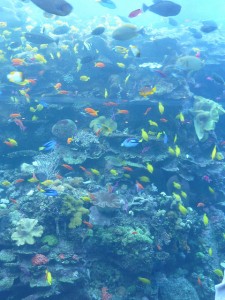SUNDAY, 13 JUNE 2010
Asexual reproduction by fragmentation is the most common form of reproduction in natural populations of Elkhorn corals. Branches break off due to for example wave action in storms and some branches establish on the reef and grow. The decline of Elkhorn coral (Acropora palmata) is due mainly to white-band disease whose effects have been compounded by indirect human impacts such as coral bleaching.Forrester and colleagues measured growth rates of Elkhorn corals, found growing in the Virgin Islands of Caribbean, under various different treatments. Their research, published in Restoration Ecology, shows a significant increase in growth rate and survival of attached coral fragments compared to unattached fragments. Removing macroalgae from around the attached fragments also increases the coral growth rate. The method of attaching coral did not have an effect on coral growth although some methods may be more beneficial than others due to cost and efficiency constraints.
Coral restoration projects are rarely studied scientifically, but this research highlights that successful solutions are sometimes cheap and simple. Transplantation methods highlighted in the study can be undertaken by relatively untrained volunteers such as recreational divers. Further work to increase public education on conservation would also help to preserve these fragile and beautiful ecosystems.
Written by Imogen Ogilvie

